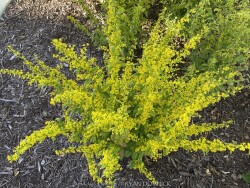
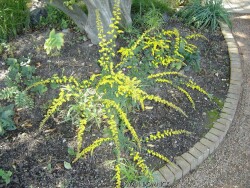
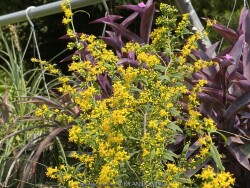
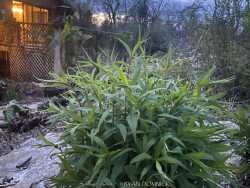

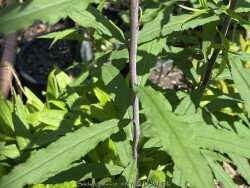
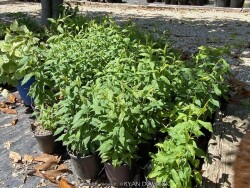
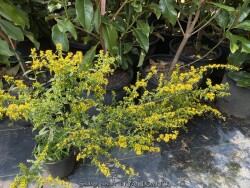
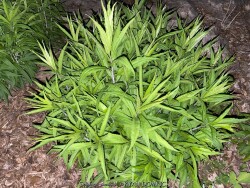
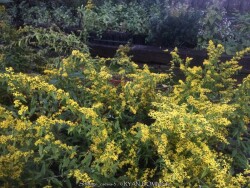
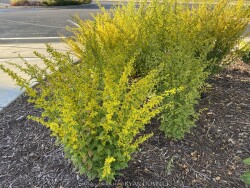
Plant Min Zone: 4a
Plant Max Zone: 8b
Sunlight: Part Sun, Shade
Water / Rainfall: Low, Average
Soil Quality: Poor, Average
Bloom Season: Late Summer, Fall
Flower Color: Yellow, Gold
Berry / Fruit Color: None
Spring Foliage Color: Green
Summer Foliage Color: Green
Fall Foliage Color: Green, Yellow
Evergreen Foliage: No
Winter Interest: Yes
Scented Flowers: No
Drought Tolerance: Medium, High
Wet-Feet Tolerance: Low
Humidity Tolerance: High
Wind Tolerance: Medium
Poor Soil Tolerance: Clay Soils, Rocky Soils, Alkaline Soils (high PH)
Height: 2' - 2.5'
Width: 2' - 2.5'
Growth Rate: Medium, Fast
Service Life: Long: 5-10 years
Maintenance Need: Low
Spreading Potential: Medium
Yearly Trimming Tips: Trim Perennial to Ground Around First Fall Freeze: No Winter Interest.
Plant Grouping Size: Small Grouping of 3-5, Medium Grouping of 5-10
Best Side of House: East Exposure, North Exposure
Extreme Planting Locations: Root-Bound Soils Under Tree, Survives Severe Drought, Top of Retaining Wall Locations, Resistant to Rabbits
Ornamental Features: Multiple Seasons of Interest, Long Blooming Season, Long Lasting Fall Color
Special Landscape Uses: Naturalizing, Groundcover
Possible Pest Problems: Foliage Disease
Plant Limitations: Unwanted Self-seeding, Sometimes Mistaken as Weed
Shippable in 2026: YES
Bluestem Goldenrod (Solidago caesia) is a perennial wildflower with arching blue-green stems is native to the eastern and central parts of the United States and Canada. This woodland goldenrod occurs in open upland woods, shaded bluffs, slopes of wooded ravines and rocky cliffs. Yellow late-summer flowers contrast nicely with bluish purple stems. Considered one of the best plants for solving your most difficult dry-shade landscape challenges and still providing flowers if given at least a couple hours of sun or all-day dappled sun through the trees. Goldenrods are not wind-pollinated and therefore do not cause standard hay fever or allergies. This goldenrod attracts native bees, wasps and pollinating flies. Rabbit and deer resistance is good. This goldenrod has been planted in our trial gardens over 15 years ago on a dry-shade berm with 2-3 hrs of morning sun. The slowly expanding clump is virtually maintenance free, only needing trimmed in fate fall. This species does not spread by rhizomes or runners like some other goldenrods but will self-seed prolifically if you do not mulch. Bluestem Goldenrod is not well known or available in garden centers but worthy of wider scale landscape use.